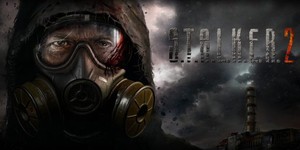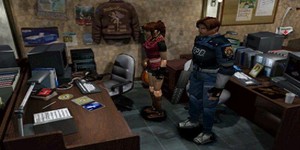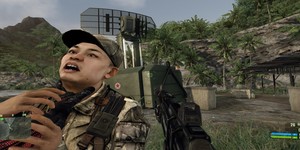Ten Years On: S.T.A.L.K.E.R: Shadow of Chernobyl
March 22, 2017 | 10:20
Companies: #cd-projekt #gsc-game-world

Ten Years On: S.T.A.L.K.E.R Shadow of Chernobyl
It’s odd to think that Shadow of Chernobyl is 10 years old, because there was a time when it seemed like it would never come out at all. Originally announced in 2001, GSC Game World’s ambitious FPS took another six years to finally see the gloomy light of day. What’s more, after a seemingly infinite sequence of delays, the resulting game was a stripped-down, roughly-stitched-together version of the gritty, open-world survival game that the studio originally envisioned.
I remember playing it back when it launched and feeling vaguely disappointed at the form the final game took. Partly this is down to a failure of expectation. STALKER launched roughly a year after The Elder Scrolls IV: Oblivion, and Oblivion’s runaway success had everyone hungry for similar experiences. Shadow of Chernobyl was touted to have an Oblivion-like structure, which led to the coining of the perilous phrase “Oblivion with guns.”
Even in its most complete realisation, I don’t think Shadow of Chernobyl was ever intended to be Oblivion with guns. At the same time, it certainly wasn’t quite the game that most people, including the developers themselves, hoped that it would be. What was initially intended to be a seamless world was broken up into several smaller areas, and a vast range of prototyped mechanics, such as sleeping, driveable vehicles, faction alliances, and a bunch of others never made it into the final product.
That said, I think my own disappointment stemmed more from the fact that Shadow of Chernobyl doesn’t sell itself particularly well. The opening area, the Cordon, does a poor job of conveying STALKER’s strange and still largely unique atmosphere. It also has a difficulty spike that’s as sudden and punishing as a rogue wave. The first story mission tasks you with clearing a factory crammed with heavily armed bandits, while your character is equipped only with a pistol that might as well fire grapes for all its effectiveness. Both the story and the game’s more unique mechanics are terribly explained, and the writing is absolutely appalling. There have been disease epidemics that started more auspiciously than Shadow of Chernobyl.
Nevertheless, there’s a reason why Shadow of Chernobyl’s tenth anniversary is worth celebrating. When all its ideas come together, there’s nothing quite like it as an FPS. The strange and haunting atmosphere of Chernobyl’s Exclusion Zone has lost none of its potency in the last decade. Its cloud-scarred skies weigh heavy with foreboding, and what little light that breaks through this slate-grey ceiling is sickly and muted. Shadow of Chernobyl also sports a beautiful wind simulation, its eerie bluster wailing in your ears, kicking up leaves and dust from the sides of the Zone’s abandoned roads.
Step beyond the shattered railway bridge that marks the Russian Army’s cordon, the game’s twisted and dilapidated art style ratchets up a notch. The zone known as the Garbage trades in the Cordon’s unremarkable landscape for mountains of radioactive rubbish, forests of tortured, leafless trees, murky swamps, and a crumbling Soviet railway depot. The environments don’t feel so much lived-in as died-in, the plants and architecture warped and decomposing from age and radioactive decay.

MSI MPG Velox 100R Chassis Review
October 14 2021 | 15:04

![Ten Years On: S.T.A.L.K.E.R: Shadow of Chernobyl [TUESDAY 21st] Ten Years On: S.T.A.L.K.E.R: Shadow of Chernobyl](http://images.bit-tech.net/content_images/2017/03/ten-years-on-stalker/stalker1-614x345.jpg)
![Ten Years On: S.T.A.L.K.E.R: Shadow of Chernobyl [TUESDAY 21st] Ten Years On: S.T.A.L.K.E.R: Shadow of Chernobyl](http://images.bit-tech.net/content_images/2017/03/ten-years-on-stalker/stalker2-614x345.jpg)
![Ten Years On: S.T.A.L.K.E.R: Shadow of Chernobyl [TUESDAY 21st] Ten Years On: S.T.A.L.K.E.R: Shadow of Chernobyl](http://images.bit-tech.net/content_images/2017/03/ten-years-on-stalker/stalker3-614x345.jpg)
![Ten Years On: S.T.A.L.K.E.R: Shadow of Chernobyl [TUESDAY 21st] Ten Years On: S.T.A.L.K.E.R: Shadow of Chernobyl](http://images.bit-tech.net/content_images/2017/03/ten-years-on-stalker/stalker4-614x345.jpg)








Want to comment? Please log in.